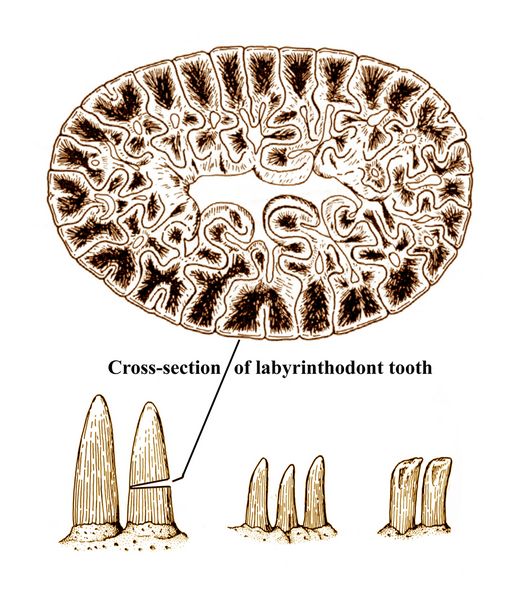Athena Review Image Archive ™
Labyrinthodont teeth

Labyrinthodont teeth
Labyrinthodont ("maze-teeth") are a relatively primitive type of tooth, with the name referring to the complex infolding of
the dentin and enamel of the teeth (see figure). In
cross-section, the labyrinthodont teeth show many layers of folded
enamel and dentine. The labyrinthodont teeth are often the only part of the creatures that fossilize.
Labyrinthodont teeth are found in sarcopterygian (lobe-finned) fishes, tetrapods, and amphibians, all of which are usually homodonts (i.e., with all teeth of the same form, usually conical or spike-like).
The subclass of Late Paleozoic amphibians named Labyrinthodontia, which evolved from lobe-finned fishes in the Devonian, may be ancestral to all extant land vertebrates. This amphibian subclass was defined by Owen in 1860. They are also distinguished by a heavily armoured skull roof (hence the older name Stegocephalia or "roofed-head").
References
Clack, J. A. 2002. Gaining ground: the origin and evolution of tetrapods. Indiana University Press, Bloomington, Indiana.
Romer, A. S., 1966. Vertebrate Paleontology. University of Chicago Press, Chicago
Copyright © 1996-2020 Rust Family Foundation (All Rights Reserved).